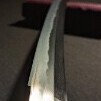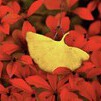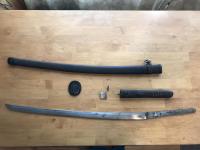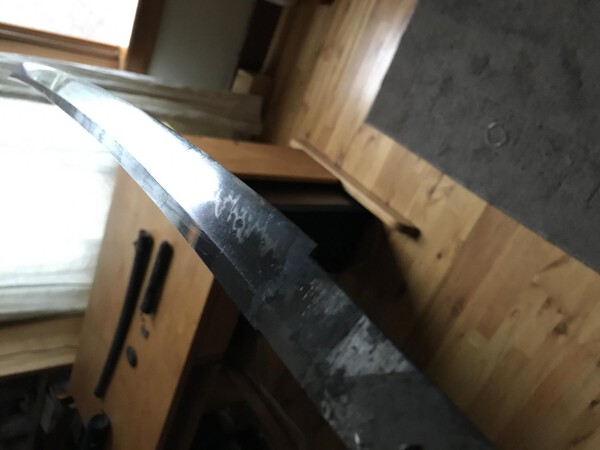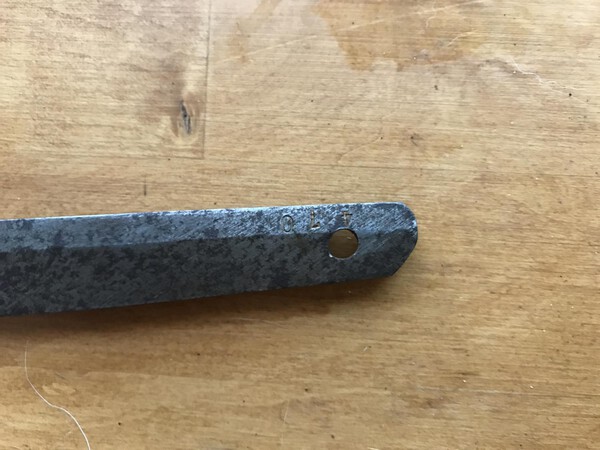Leaderboard
Popular Content
Showing content with the highest reputation on 08/15/2021 in all areas
-
丞 (jo) on the NBTHK paper is a variant of the last kanji on the nakago. I do not have the font of the original kanji, so refer to the attached image. SteveM already explained the meaning of 丞 (jo). Ref. u2dd60-j (𭵠) - GlyphWiki This is my guess as a possibility. If the last kanji on the nakago is also equivalent to another kanji 烝 (jo), it might mean “to present".5 points
-
Dear Michael. Congratulations on your first sword. First of all a reality check. Do you seriously think that having purchased a library, travelled to a sword show, bought your first blade and allowed yourself to be photographed studying it intently you are not obsessed? It's too late, my friend! You may have to hold back a little with baby on the way but it's never gonnna go away now! The type of sori is hard to see in most blades in hand, the diagram Stephen linked to will help and so will looking at lots of swords where there is an accurate description. As this is a Shinto Takada sword torii sori would be expected. Minor point but it matters, this is a TAKADA sword not Takeda, they are often dismissed as functional not artistic but that is a whole can of worms I'm not getting into. It does, however, make information a little harder to find. I hate to add to your library list but if you do not have them might I recommend the volumes Art and the Sword, published by JSS/US? I'm sure Grey could sort you out with these. In particular Vol. 4 has a lengthy essay on Kyushu Shinto. Excellent information and wonderful oshigata, (and just to confound my earlier statement I note that there is a sword by Yukinaga which is described as having shallow koshi sori). Enjoy! All the best.4 points
-
Need more info. The first three are normally a name, or part of a given name: Jibei The last is normally part of a rank or title ~丞 (~no jō). Japanese is a language for which context can completely change the meaning of the text, so it really depends on what comes before it - but it looks like "name + title".4 points
-
Ah, Kawasaki is the company for which I worked for many years. Ref. https://shizenkaze.exblog.jp/27755752/3 points
-
This will be the first of two posts, since I purchased two swords. I recently attended the 2021 San Francisco Token Kai and had a marvelous time. You can see some of my photos/video here: As I'm a beginner, and this was my first show, I had several goals: First and foremost was to learn and handle Nihonto for the first time. Next was to come away with a sword to study if I found something within my budget ($3000) that caught my heart. This may seem a humble budget, but I have already invested in a solid library of books on Nihonto, we have our first baby on the way, and I am hesitant to spend more than this at the beginning of a hobby that isn't (yet ) an obsession. Since I lived there for a time, I wanted to accomplish #2 with a smith from Kyushu. I am very happy to say that I was able to accomplish all three goals for well below my budget! With my trusty set of books and the Kantei Sheet from the NMB documents, I set up shop in our living room and got to work on my first kantei. I started with sword given the fact that it is a papered blade, and I hoped to be confirming that paper as I refreshed myself/applied the myriad terms required in kantei. Yes, I know the warnings with green origami and knew them when I purchased the sword, but it's a minor smith (less chance/cause to forge the papers), was very reasonably priced, I liked the sword itself, and see Goals 2 and 3 above: So, without further ado, here's my first attempt at a Kantei. Rather than re-typing all the measurements/assessments out, please check out the kantei sheet. I absolutely welcome all comments, constructive criticism, or your thoughts. Thank you! ..2 points
-
2 points
-
2 points
-
Those older green papers are considered worthless for such a high end smith. If you search the forum you will find alot of information on the topic of old NBTHK green papers.2 points
-
Michael, congratulations on your great start and the way you are going about it. With the purchase of your first sword and a new baby on the way you have just begun to appreciate the beauty of new additions to a family. I am sure you will love them both and enjoy both the new hobby and new family. Thank you for sharing MikeR2 points
-
Congratulations on your first sword, you have certainly started in a much better way than most of us did! Picking up on Geraint's point, Bungo Takada blades tend to be regarded as utilitarian in Japan. I think this is in part because they tended to produce copies on the main line schools rather than in an individual style. However the fact they were able to reproduce so many different styles (Bizen Soshu, Mino etc.) says a lot for their skill. There are many blades around that have been attributed to well known schools and then re-assessed as Takada and vice versa . Enjoy you blade and where the study leads you.2 points
-
I’m not sure who Joe is, but he sounds like a an upstanding gentleman 😉 Thank you for the compliment too. I think my generation could use a bit more looking towards the past than at their iPhones.2 points
-
2 points
-
2 points
-
1 point
-
1 point
-
1 point
-
1 point
-
Dear Robert. I have to agree with Gwyn and Brian, this is at best a modern reproduction of a Shingunto, a WWII army sword. The shaping of the blade, the exaggerated pattern in the steel, the detail of the fittings, the way the hilt is wrapped, all confirm this. Not to worry, stick around and find out more. All the best.1 point
-
The paper doesn’t say it’s Muramasa: it says “den Muramasa”. So of that school or tradition but it doesn’t fit with the work of the man himself. And it’s a green paper so what John said above. And it’s way underpriced so not likely to be the real deal.1 point
-
@Bruce Pennington 宣威 (Nobutake) is the name 吉原國家 ( Yoshihara Kuniie)use when he worked in Tokyo first.He also use 昭廣(Akihiro). On Ohmura's :各工廠 (造兵廠) 鍛練所で専属嘱託刀匠に依り作刀された鍛錬刀 (茎に刀匠銘と造兵廠標章刻印) 東京砲兵工廠: 横山祐包・森岡政吉、東京第一陸軍造兵廠: 吉原宣威 (昭廣・國家同人)、大阪工廠(造兵廠): 月山貞勝・貞一 (二代) ・貞重・正清、小倉工廠(造兵廠): 白龍子忠孝・平貞重・兼延、 旧兵器廠 善平 他1 point
-
Volker san, I can't help much, but I think the inscription is: O-shu Fuji-X Nao-suke Kane-mitsu I am not sure of some of this reading of course, but Oshu is Fukushima Prefecture (Aizu-Wakamatsu). You need to look for the smith names possibilities as Naosuke (unless it is a personal name?)....and Kanemitsu. There was a branch of the Mino Kanesada line up there running from c. 1670-1903, so maybe a pupil? Hope this helps a little, Regards, Edit to add...Oh I see Uwe has added info...most likely mine has errors...sorry.1 point
-
Yeah, I ran it through Google translate without luck. Individually, the kanji seem to mean "heaven (ten) mysterious (gen) mulberry tree (kozo)"--the kozo is "paper mulberry" which is used to make washi paper... I suspect it's a kind of "kigo" or poetic way of stating the time of year.1 point
-
@Geraint, it IS Takada isn't it? It's funny, my eyes must've just glanced over the a and turned it into the e given the famous clan. Thanks also for the book recommendation. Ha ha, my wife and my wallet don't want to admit that you're right on the obsession piece, but evidence suggests.......1 point
-
1 point
-
I mean this respectfully but the Nakago looks very odd even by Showato standards, also looks like a patina was forced on. I do see some gunto parts albeit in bad state. Was it common for gunto replacements forged in occupied countries to have those odd quirks? And why would they use type 98 fittings instead of cheaper late war fittings? More a question than a statement, I wholeheartedly admit I know too little about gunto, even if I am trying to read up on them nowadays.1 point
-
Very nice ... I would have paid money to have access to his webcam at the exact moment he looked at the picture of the tsuba and realized the gig is up and how foolish he looks. Bravo. It's a shame. I've reported quite a few of these types of sellers on ebay along with multiple accounts with bogus listings and price fixing ect. and Ebay doesn't seem to care. Go figure Etsy takes action over night with bogus scam listings and Ebay says they care and to report but nothing usually happens. Cheers1 point
-
1 point
-
Kyūshū Higō Dōtanuki Jihei ... those are the first 10. Could it be that the 衛 character, which is usually written in grass script on this smith's swords, is being mistaken as 丞? There is an article on this smith and how hard it is to read the name, and the potential for these swords to be forged. Look at the illustrations numbered #40 and #41 in the article. He hints (whithout stating explicitly) that the name on #41 is engraved differently enough to be considered a forgery. https://www.token-net.com/knowledge/62_about_gibutsu_14.html Nowhere does it mention anything about 丞 being added.1 point
-
So, Brian, what I have heard from some experienced sources is that the NBTHK could still paper something but on the setsumei they will say they disagree with the attribution. For example, here below with the Sa blade the Honami attributed it to Sa, meaning O-Sa, but the NBTHK Shinsa in the setsumei said ‘definitely not O-Sa’ and gave it to Sue Sa. on the front, in brackets they say “後代”, which means later generation, ie Sue Sa. Below with the Masamune blade, they papered it but: - on the front they say “to kinzogan mei ga aru”, which means “there is a gold inlay signature”, and generally this could be a red flag (NB this is an advanced topic as such a “to mei……” attribution might disappear from Juyo to TokuJu) - on the back, in the setsumei they say it is definitely a high-end Soshu blade - they go as far as to say the blade looks more like Sadamune and could not go as far as attributing it to Masamune Now, the above are rare instances but comprise an excellent learning resource. However, in most cases, especially if the Honami is very reputable, they will uphold it.1 point
-
For comparison. Look at the quality of file marks (yasurime)...they are almost non-existent on the subject nakago. He was a master of all five school styles (gokaden) so the sugata of his swords may change, but things like handwriting (mei carving) and the yasurime will not vary much. Sorry Steven, the subject sword does not appear to be an "important people and clans" with a "quality cutting edge and shape plus resilience." <-- whatever that means. To the original poster. Screw the signature, it is a nice package. Hopefully you can get a good deal on them and enjoy for many years. Wishing you the best.1 point
-
Johan, you really need to purchase "The Craft of the Japanese Sword" from Amazon for $27 as Darrel suggested. All, or at least many, of your questions will be answered. For one thing, every sword blade generally has some taper to it, so does the shirasaya made for it. There are NO fixed sizes of thickness, breath and width. The dimensions of the sword dictate the size, shape, thickness, etc.of the shirasaya. As to the fit of the blade inside the shirasaya, I find it helpful to cover the blade with choji or mineral oil so you can see where the blade contacts the wood inside the shirasaya. Then carefully remove the oil stains from the inside of the shirasaya BEFORE gluing the two parts together. Good luck with your project. I'm sure the second shirasaya you make will benefit from the experience you get from the first one.1 point
-
1 point
-
I don't know why this mei is being discussed, when thee is no kantei of the blade's features! The mei is the last thing that should be considered.1 point
-
Yes I think it’s being resolved. To add context the seller is indeed one of us and a long time seller so I see no reason to assume any dishonesty. I received a verbal and written guarantee that the sword does not have hagire and will be submitting it to shinsa to confirm. I’m told the sword was last polished by a Fujishiro family member (I should have listened better but was told son) who also appraised the sword as from Kaga and said it was healthy, without fatal flaws. So assuming that I will submit it for shinsa, keep my fingers crossed, and hopefully this saga of a sword with those ugly looking marks will have a happy ending.1 point
-
I would be bit cautious about the Taikei Naotane. He is very famous smith and lot of false signatures bearing his name are out there. You can find lots and lots of reference signatures by him, I am not qualified to judge them as they vary a lot in form, style and execution. There are lots of different ones judged genuine by NBTHK that seem very different to my eye, so there is bound to be variation. One thing that makes me bit skeptical is the dating as it is dated to the month he died at the age of 79. I believe there are people who specialize in Taikei Naotane and can give you much better insight. I think the Jumyō might be from late Muromachi into early Edo period. Jumyō smiths were known to do that very long elongated stroke at the bottom character. However on yours it is even longer than on my reference examples. Perhaps that could be a thing to look for if some did longer one than others? I am just looking at the sword in overall and basing my estimation about the age on that.1 point
-
1 point
-
1 point
-
1 point
-
Alton - When I started out I was a poor student (then as now) no funds for these pricey toys so I determined early on that I would learn as much as I possibly could and see as many good swords as possible to build a collection in my head that no thief could steal. I feel I have been successful and along the way thru the kindness of other collectors I have put together a modest collection of real blades of which I am proud. Stick to your studies and the same can happen for you... -t1 point
-
It would be very interesting to read a history of polishing technology; it may be that one or more exist (in Japanese) but i do not know.....I would pay good money for one in English! High level polishing, in my opinion, comes down to: access to good technique, access to good stones, and lots of patience. These are all things that the Japanese people have had access to for a thousand years. I have heard that some mines of particular stones have become exhausted and good stones harder to obtain (or very expensive, try $3000 plus for a good uchigumori finishing stone.) Goes a long way to explaining why polishing is expensive.1 point
-
The text i shared cannot be found on Internet; i got it from the curator of the Baur Museum whom i know personally. It's written in french and i translated it (hope translation is correct). Must be read as we do, not in the Japanese way => 13th century = 1400s1 point
-
A little text about polishing from the Baur Museum in Geneva1 point
-
Woodrow Hall....I do not have contact info for him, maybe Ken Goldstein on this forum has it? https://bushidojapaneseswords.com/index.html contact for Bob Benson....he will most likely be in touch with Woody; no guarans that either will have a recommendation, but nothing ventured, nothing gained.1 point
-
Do you have contact for Woody? Woody would have opinion on to send for a shirasaya in the USA? Chris1 point
-
I think he used to have them made by Randy Black. Mike Virgadamo in Californa does very good quality and affordabkle Shirasaya1 point
-
1 point
-
Robert Benson is in Hawaii… he should be able to help you out with the decision and who to use. Right now my initial reaction is if they are not financially worth polishing (and I mean no disrespect to the blades), then keeping them in their original mountings really isn’t a big deal. If they were expensive blades in good polish or getting fresh polish, then shirasaya is the way to go. My humble opinion of course.1 point
-
I would say that so long as the cost to you is bearable and you are willing, there is never a reason NOT to have shirasaya made for a blade. Whether or not it makes financial sense is really the only question.1 point
-
1 point
-
Here is a photo of the whole blade and one of the more active parts of the hamon. Hard to tell if the rest is as active because of the poor condition of the polish. Also including a shot of the base of the tang the number 470 is stamped. I am under the impression that any stamps other than stars are not great but it’s not a sho or seki stamp so maybe it is not an indicator of non traditional methods? It’s interesting that the blade was s dated in 41 but it’s in 1944 gunto mounts. Did this sword sit around waiting to be mounted for most of the war? Thanks for all the help with the signature and date.1 point





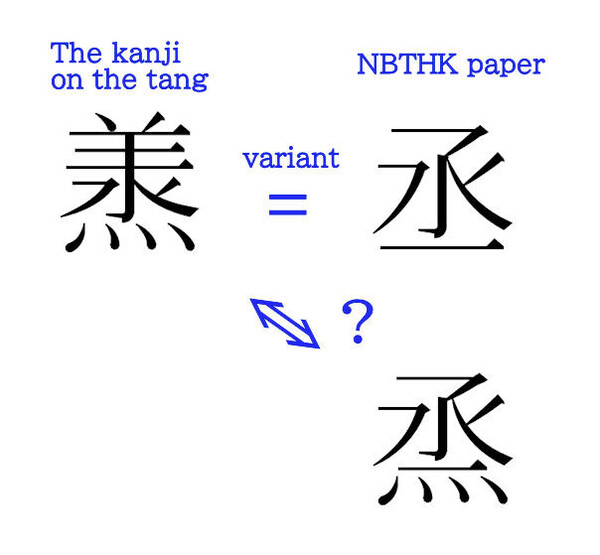



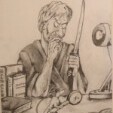




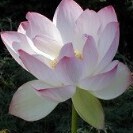



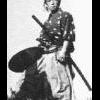



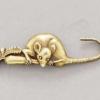



.thumb.jpg.bc10b59027a00aa142dce0349f3ba9e0.jpg)
